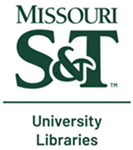Abstract
Architectured materials offer tailored mechanical properties but are limited in engineering applications due to challenges in maintaining toughness across their attachments. The enthesis connects tendon and bone, two vastly different architectured materials, and exhibits toughness across a wide range of loadings. Understanding the mechanisms by which this is achieved could inform the development of engineered attachments. Integrating experiments, simulations, and previously unexplored imaging that enabled simultaneous observation of mineralized and unmineralized tissues, we identified putative mechanisms of enthesis toughening in a mouse model and then manipulated these mechanisms via in vivo control of mineralization and architecture. Imaging uncovered a fibrous architecture within the enthesis that controls trade-offs between strength and toughness. In vivo models of pathology revealed architectural adaptations that optimize these trade-offs through cross-scale mechanisms including nanoscale protein denaturation, milliscale load-sharing, and macroscale energy absorption. Results suggest strategies for optimizing architecture for tough bimaterial attachments in medicine and engineering.
Recommended Citation
M. Golman and A. C. Abraham and I. Kurtaliaj and B. P. Marshall and Y. J. Hu and A. G. Schwartz and X. Edward Guo and V. Birman and P. J. Thurner and G. M. Genin and S. Thomopoulos, "Toughening Mechanisms for the Attachment of Architectured Materials: The Mechanics of the Tendon Enthesis," Science Advances, vol. 7, no. 48, article no. eabi5584, American Association for the Advancement of Science, Nov 2021.
The definitive version is available at https://doi.org/10.1126/sciadv.abi5584
Department(s)
Mechanical and Aerospace Engineering
Publication Status
Open Access
International Standard Serial Number (ISSN)
2375-2548
Document Type
Article - Journal
Document Version
Final Version
File Type
text
Language(s)
English
Rights
© 2024 The Authors, All rights reserved.
Creative Commons Licensing

This work is licensed under a Creative Commons Attribution 4.0 License.
Publication Date
01 Nov 2021
PubMed ID
34826240



Comments
National Institutes of Health, Grant R01-AR055580